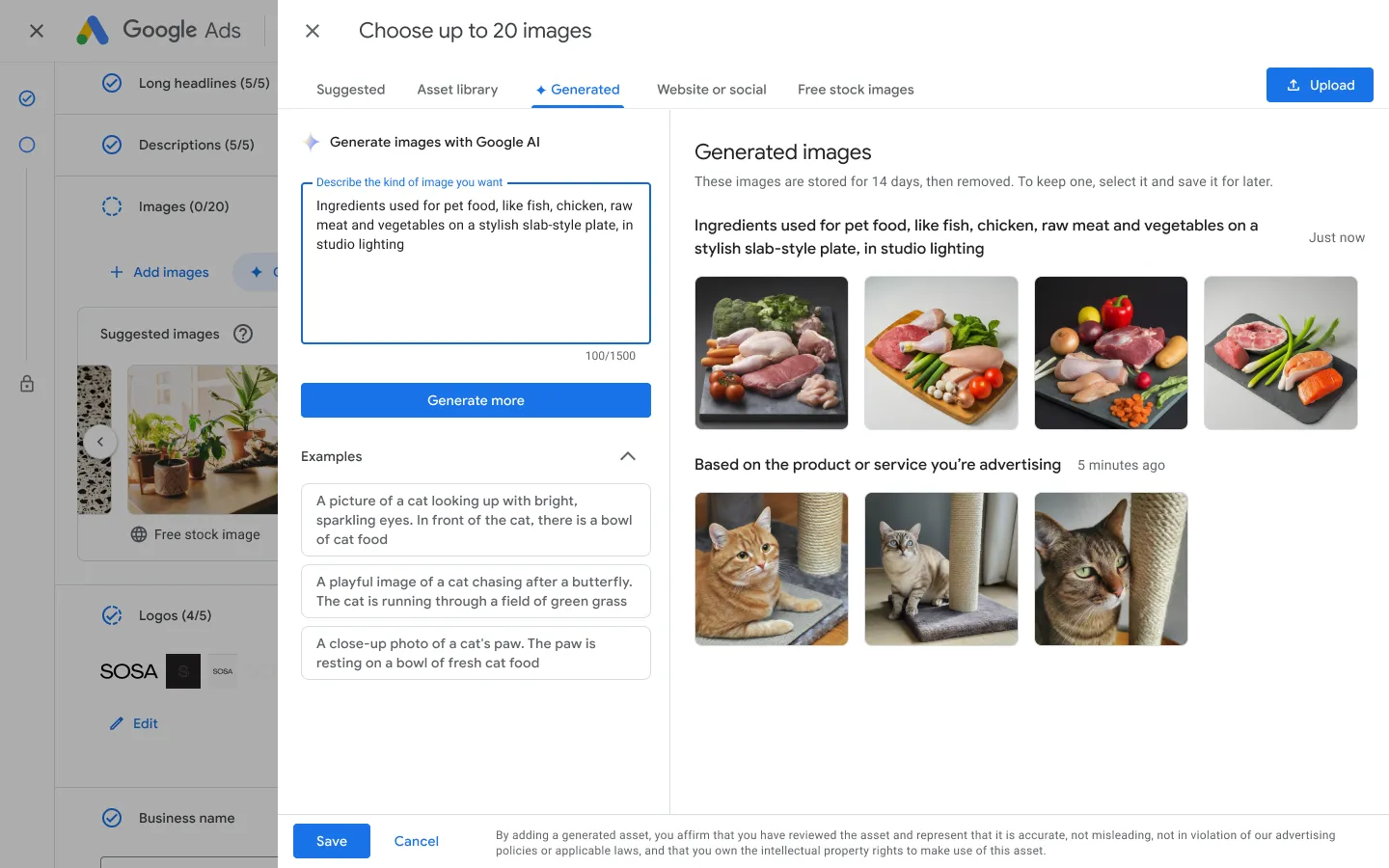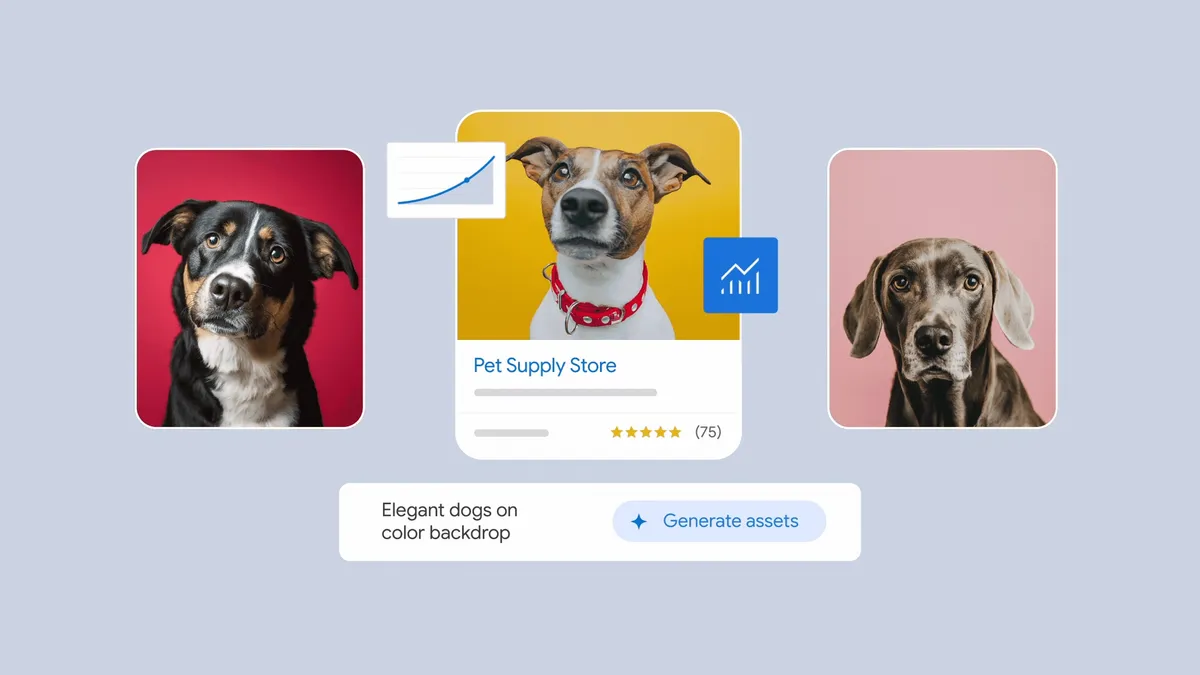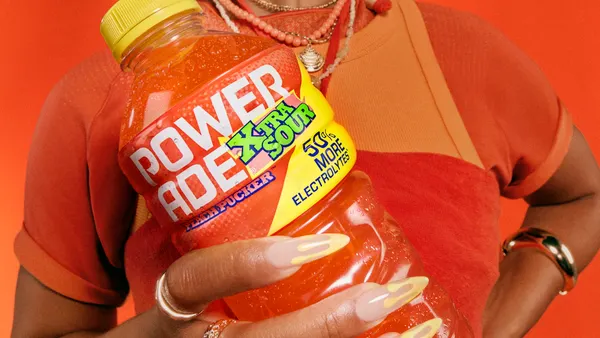Google today (Nov. 7) is rolling out generative AI features in its Performance Max ad product as a beta to all U.S. customers, per details the company shared with Marketing Dive. Executives at the tech giant detailed how early tests have gone and what marketers can expect from the asset generation features, which were first announced at Google's Marketing Live event in May.
"We've heard from our customers that creating, testing and scaling assets can be one of the hardest parts of building and optimizing a cross-channel campaign," Amanda Silvernale, global product lead at Google, said during a virtual roundtable event about features that are intended to help advertisers streamline a process that has been "such a big pain point for them in the past."
First launched in 2021, Performance Max represented the first-ever AI-powered tool that works across all Google Ads inventory, including search, YouTube, display, Gmail, Maps and more. Since then, Google has improved the underlying AI and rolled out features that help advertisers use the tech and evaluate its performance.
"Marketers continue to turn to Performance Max to help them stay ahead of consumer trends and reach and engage customers at the right moments in time," said Brendon Kraham, vice president of search and commerce for Google Ads, who said the platform helps advertisers meet the "dynamism" of the ad market. "Customers [are] leveraging things like Performance Max to help them maximize ROI during this critical time."

The rollout comes as the crucial holiday marketing period is in full swing, and seeks to help advertisers navigate an increasingly fragmented media landscape. During the 2022 holiday season, more than half (54%) of shoppers used five or more channels to shop over a two-day period, per Google data, demonstrating the need for advertisers to quickly and easily generate assets for a variety of channels.
With its latest feature launch, advertisers rolling out campaigns during the holiday season and beyond can generate all the assets they need for a campaign by simply providing the URL of a preferred landing page, rather than creating a range of text and image assets individually. From there, advertisers can view and edit AI-populated assets, including both stock and AI-generated images, with a guarantee that Google will never create two identical images, even when given the exact same prompt.
Early beta testers over the last month or so have said that the tools help them save time and resources, allowing them to more quickly experiment with creative ideas and concepts before bringing them to life in their campaigns.
"These assets have become a true game-changer for our creative team. This innovative approach not only saves us valuable time but also enables us to craft high-quality, personalized visuals that resonate with our audience. With generated assets, we can experiment, adapt and tell compelling stories that bring people closer together, forging the connections that matter most in our lives," said Jason John, CMO of 1-800-Flowers.com, in a statement.
Concerns about AI
Google's latest application of generative AI comes as the buzzy technology is the subject of headlines about its propensity to create reputationally harmful content and "hallucinate" false information. Generated assets are being developed in line with Google's AI principle and practices, and all images created with the tech will be identified and watermarked as such. Google said it has "guardrails" in place to prevent systems from engaging with inappropriate or sensitive prompts, but executives could not share details on safety measures as a matter of policy.
"Our models are always improving in terms of quality and safety," said Pallavi Naresh, Google’s Performance Max group product manager. "All of our generated assets go through our standard ads review processes and are subject to all of our policies and enforcement mechanisms."
Separate from issues around generative AI, Performance Max has been the subject of recent reports that maintain that some agencies have concerns about the inventory quality, transparency and performance of campaigns in the ad system. Asked about these reports by Marketing Dive, Google executives stressed that Performance Max requires a new way of thinking since it is optimized towards delivering on advertiser goals and outcomes differently than previous types of manual campaign construction.
"[Performance Max is] rooted in the customer KPI, delivering against that KPI, and then sharing as much as we can from, say, an auction insights perspective, to understand what might be going on as it relates to your particular performance," Kraham said. "The primary focus is that core customer objective: what is that KPI that they're most trying to accomplish, and then delivering against that.”












